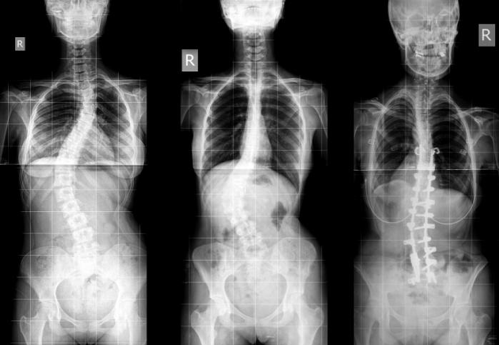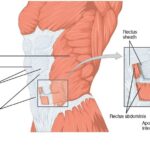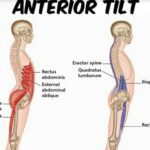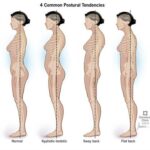The American Association of Neurological Surgeons states “Scoliosis affects 2-3 percent of the population, or an estimated six to nine million people in the United States” [1]. While persons affected by it can and are generally encouraged to participate in sports and exercise regularly, a good understanding of this skeletal condition is in order so they may place more focus on the care of their spine and prevent related discomforts or worsening.
Definition

Fig. 1
In the sagittal plane (profile view), the spine has natural curves that allow it to perform various functions such as lifting, maintaining balance and standing erect. In the frontal plane (back view), the spine appears straight. Scoliosis occurs when there is an unnatural curvature of the spine along all planes (sagittal, frontal and axial – the axial plane divides the body into superior and inferior parts), although the back view is the most visible to the layman person and also where scoliosis is measured. Scoliosis is diagnosed if the unnatural curvature from the sagittal plane is beyond 10 degrees.
Fig. 1 (left) indicates a comparison of a normal spine and a spine with curvature from Scoliosis.
Fig. 2 (below) notes the visual impact of the deviation in his back, in which the displacement of his scapula, ribs and hips can be viewed.

Fig. 2
Symptoms
The spinal deviation can vary in severity. A mild case does not present significant problems, while more severe cases can affect muscular balance, breathing, hip alignment and be chronically painful. The “S”shaped curve (or double curve) may worsen in time, just as a large curvature may worsen (as opposed to a small curve). It is most common in childhood or early teens, during the growth spurt of the adolescent. Girls are more likely to be affected than boys.
Causes
The causes of most cases of Scoliosis are unknown. They are classified into three categories: Idiopathic, Congenital and Neuromuscular. The predominant percentage of cases (65 %) fall into the Idiopathic classification (causes unknown); the congenital cases (abnormal development which initiate in utero) comprise 25 % of cases and this is compounded if there is a family history involving this condition. The neuromuscular cases are comprised of syndromes, such as Muscular Dystrophy and Cerebral Palsy.
Diagnosis

Fig. 3
Early detection and diagnosis of this condition is usually made during a doctor’s or school nurse’s physical examination with the Adam’s Forward Bend Test: the child’s shirt is raised and they bend forward at the waist, in this position, the spine and rib cage is inspected for abnormalities. Applicable cases are confirmed with x-rays. The x-rays indicate the severity of the distortion and can be the basis of recommended treatment.
Fig. 3 notes an x-ray with a healthy depiction of a spine ( on the right) and two examples of curved spines of varied distortions (on the left).
Treatment
Treatment options (at the time of diagnosis) are classified into three categories: observation, bracing and surgery. For our purposes, we will progress beyond the adolescent years, in which bracing and surgical intervention are no longer applicable. The affected person has adapted to their condition and adjusted their lifestyle and physical activities. Studies have shown that electric stimulation of the muscles, chiropractic manipulation and dietary supplements have not been deemed to be effective. General exercise and participation in sports are encouraged as they contribute to improving overall health and well- being. Inversion tables may offer relief, due to the reversal of gravity on the spine and the promoting of fluids into the spinal sacs. Lastly, massage therapy has been found to be beneficial, due to muscle manipulation, lumbar and thoracic stretching and addressing of the muscular imbalances.
Exercise, stretching and massage will be geared toward reducing the unnatural curves and restoring healthy curvatures. 4 examples of exercises are listed below.
1. Spider
Stand facing the wall, with feet together. Lean forward and place both hands on the wall at chest height. Tighten the abs and slowly walk the fingers up the wall (similar to a shoulder exercise). As the arms are extended over the head (away from the wall) continue stretching as you come up on tiptoes. Then walk the fingers down the wall, keeping the abs and lower back muscles engaged. Repeat several times.
2. Pelvic Tilts
Lie face up on the floor with knees bent, feet flat and arms relaxed at your side. Tighten the abs and buttocks and slowly curl your pelvic bone inward, feeling the lower back flatten against the floor. Hold for 5 seconds, breathing normally before releasing. Repeat several times.
3. Down Dog
Lie in a push-up/plank position with arms straight and push the hips back, upward as far as possible. Hold for 2 seconds and then lower the hips toward the floor, creating an arch of the back (comfortably). Repeat several times.
4. Cat-Camel
Get on hands and knees, with abs tightened and head straight. Take a deep inhale and lift the lower rib cage, rounding the back and relaxing the neck. Exhale, lowering the chest toward the floor and raising the head upward. Return to the starting position and repeat several times.
References (viewed 6/5/18):
- http://www.aans.org/Patients/Neurosurgical-Conditions-and-Treatments/Scoliosis
- https://medlineplus.gov/scoliosis.html
- https://www.spine-health.com/conditions/scoliosis/scoliosis-what-you-need-know
- https://en.wikipedia.org/wiki/Scoliosis
- https://www.mayoclinic.org/diseases-conditions/scoliosis/symptoms-causes/syc-20350716
- https://www.livestrong.com/article/516288-how-effective-is-massage-therapy-to-treat-scoliosis/
- https://www.treatingscoliosis.com/blog/8-scoliosis-workout-exercises-can-try-home
Illustrations (viewed 6/5/18):
- http://www.njspinespecialists.net/blog/when-is-the-right-time-to-consider-scoliosis-surgery/
- https://www.simplebackpain.com/physical-therapy-for-scoliosis.html
- https://www.medicalnewstoday.com/articles/190940.php
This article/video is for educational purposes only; do not attempt without your physician’s clearance. If you are in pain or injured, see your physician.
Copyright © Vidal Sports LLC 2018






